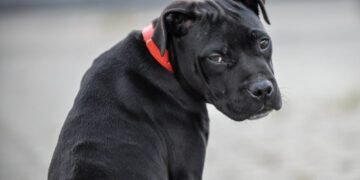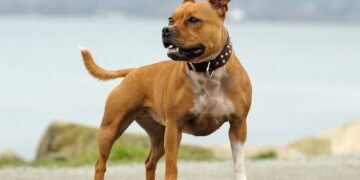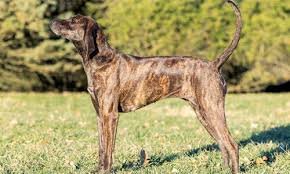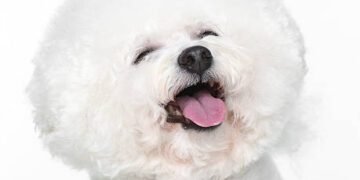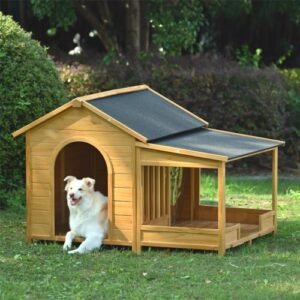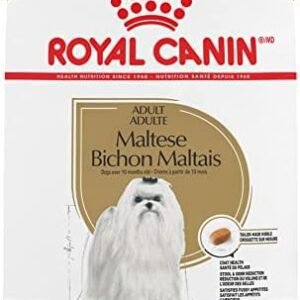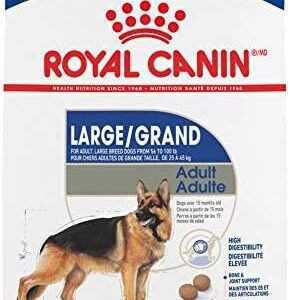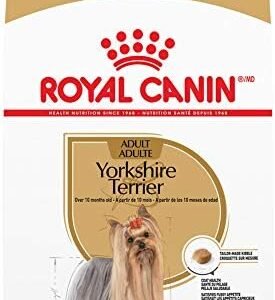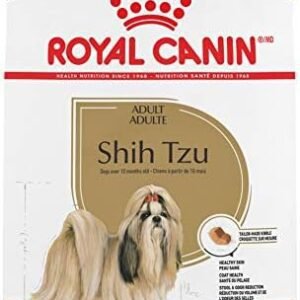The Pekingese dog breed, with its captivating blend of grace and regality, has enchanted dog lovers for centuries. These remarkable canines possess a storied history, distinctive characteristics, and a unique temperament that sets them apart in the world of dogs. If you’re considering adding a Pekingese to your family or just want to deepen your knowledge of this breed, you’re about to embark on a journey into their captivating world.
What Makes the Pekingese Breed Unique:
The Pekingese breed’s uniqueness lies in its rich history, distinctive physical characteristics, and spirited temperament. These small yet sturdy dogs were cherished as companions of Chinese royalty for centuries, earning them the nickname “Lion Dogs” due to their resemblance to Chinese guardian lions. Their regal and dignified appearance, paired with a captivating blend of independence and loyalty, makes the Pekingese a one-of-a-kind breedbreed.
Table of Contents
Selecting the Right Breed for Your Lifestyle:
Choosing the right dog breed is a decision that significantly impacts both the dog and the owner’s life. The Pekingese is no exception. Their breed characteristics influence their behavior, exercise needs, grooming requirements, and compatibility with various living environments.
Pekingese Breed Characteristics Table:
| ✅ Field | Information |
|---|---|
| Height | 6-9 inches |
| Weight | 7-14 pounds |
| Life Span | 12-15 years |
| Good with | Singles, seniors, families |
| Temperament | Loyal, affectionate, independent |
| Intelligence | Moderate |
| Shedding Amount | Moderate to high |
| Grooming | High |
| Exercise Needs | Moderate |
| Energy Level | Low to moderate |
| Barking Level | Moderate |
| Drool Amount | Low |
| Coat Length/Texture | Long, straight, coarse |
| Colors | Various colors, often red or gold |
| Patterns | Not applicable |
Pekingese Breed History and Origin
Exploring Their Roots:
The history of the Pekingese breed is a captivating journey that begins in ancient China, where these small dogs were revered as imperial companions. The Pekingese, often called the “Lion Dog,” has its roots in Chinese royalty, serving as beloved pets to emperors, empresses, and their courts. Let’s delve into the historical development of the Pekingese, including the breeds that played a role in its formation.
Ancient Origins:
The Pekingese can trace its lineage back over 2,000 years, and its beginnings are steeped in legend and folklore. It is believed that the Pekingese breed was created by breeding small toy dogs with lion-like facial features. These lion-like characteristics were highly valued in ancient China and were believed to represent strength, courage, and protection. The resulting breed, the Pekingese, was named after the Chinese capital, Beijing, which was formerly known as Peking.
Distinctive Role in Imperial China:
The Pekingese held a unique and privileged position in imperial Chinese society. They were not only cherished as companions but were also believed to be sacred and bearers of good fortune. Emperors and empresses kept Pekingese dogs as symbols of their power and influence. These dogs were often pampered and lived in luxurious palaces, enjoying a life of opulence.
Notable Traits:
The Pekingese breed has several notable traits that reflect its history as a royal companion. These traits have contributed to their unique place in the world of dogs:
Regal Appearance: Pekingese dogs have a regal and dignified appearance that mirrors their royal heritage. Their long, flowing mane of fur and lion-like facial features continue to captivate admirers today.
Loyal and Independent: The Pekingese’s loyalty to its human companions is unwavering, a trait that likely developed during their time in the imperial courts. However, they are also known for their independent nature, which reflects their role as independent thinkers in the presence of emperors and empresses.
Symbol of Good Luck: In ancient China, the Pekingese was considered a symbol of good luck and fortune. It was believed that these dogs could bring prosperity to their owners, and they were highly treasured as such.
Relevance of Origin:
The Pekingese’s origin continues to influence its characteristics and reputation to this day. Here’s how the breed’s Chinese heritage remains relevant:
Temperament: The Pekingese’s blend of loyalty and independence is a direct reflection of their historical role in the imperial courts. This combination makes them exceptional companions for those who appreciate a devoted yet self-reliant dog.
Appearance: The breed’s regal appearance, including its long, flowing coat and distinctive facial features, has remained relativelyunchanged over centuries. This reflects the reverence for tradition and heritage.
Symbolism: The Pekingese’s historical symbolism as a bringer of good luck and fortune still endears them to many admirers today. Owning a Pekingese is seen as a privilege and an honor.
Understanding the Pekingese Breed’s Traits
Physical Characteristics:
The Pekingese breed is known for its distinctive and captivating physical attributes. Understanding these characteristics is essential in appreciating the breed’s unique charm.
Size: Pekingese dogs are small and compact, with an average height ranging from 6 to 9 inches. Despite their diminutive stature, they exude an air of grandeur, in keeping with their royal history.
Coat Type: Pekingese dogs possess a luxurious, long, and straight double coat. Their outer coat is coarse, while the undercoat is soft and dense. This coat extends over their entire body, including their tail, which arches gracefully over their back.
Color: The Pekingese breed comes in various colors, with red and gold being common. However, you can also find Pekingese in other hues, including black, sable, and cream. Some may have black masks or markings.
- Distinguishing Features: Pekingese are known for their flat faces, which give them their distinctive lion-like appearance. They have a broad, flat head with a short, upturned nose. Their large, expressive eyes are dark and prominent. Ears are heart-shaped and sit atop their regal heads.
Temperament Overview:
Pekingese dogs have a temperament that combines loyalty, independence, and regal charm. Understanding their temperament is vital for prospective owners.
Suitability as Family Pets: Pekingese are well-suited for families, particularly singles, seniors, and those with a calm lifestyle. Their loyalty to their owners is unwavering, making them wonderful companions.
Compatibility with Children: Pekingese can be good with older, well-behaved children who understand the need to be gentle with small dogs. Due to their small size, they may not be the best choice for homes with very young children.
Compatibility with Other Pets: With proper socialization, Pekingese can get along with other dogs and pets. Early introduction and training are essential to ensure harmonious coexistence.
Environmental Needs:
Space: Pekingese dogs adapt well to apartment living due to their small size. They are relatively inactive indoors and enjoy a cozy spot to rest.
Special Environmental Needs: Pekingese dogs are sensitive to extreme temperatures, particularly heat. It’s crucial to provide them with a cool and shaded environment during hot weather to prevent overheating.
Common Behavioral Traits:
Pekingese dogs exhibit both positive and challenging behavioral traits that are important to be aware of.
Positive Traits:
- Loyalty: Pekingese are incredibly loyal to their owners and form strong bonds.
- Independence: They have an independent streak, which can be charming and endearing.
- Alertness: Pekingese make excellent watchdogs and are quick to alert their owners to any unusual sounds or visitors.
Popularity and Recognition
Current Popularity:
The Pekingese breed, with its captivating blend of charm and history, enjoys a level of popularity that has stood the test of time. While they might not be the most prevalent breed, they have a dedicated and passionate fan base. Here’s an overview of the breed’s current popularity:
Cult Following: Pekingese dogs are often described as a “cult breed” due to their unique characteristics and devoted admirers. While they may not top the charts in terms of registration numbers, those who love Pekingese are fiercely loyal to the breed.
Celebrity Endorsements: Pekingese have made appearances in the homes of several celebrities, further enhancing their visibility. High-profile owners have included members of royal families and Hollywood stars, cementing the breed’s reputation for regal charm.
Social Media Presence: In the age of social media, Pekingese have found a platform to shine. Numerous Pekingese enthusiasts and owners proudly share photos and stories about their beloved Lion Dogs, increasing their visibility and appeal.
- Trends in Ownership: While Pekingese may not be the most popular choice for first-time dog owners, they are often sought after by those who appreciate their unique blend of loyalty and independence. As more people look for distinct and characterful breeds, the Pekingese has experienced a resurgence of interest.
Breed Recognition:
The Pekingese breed has achieved recognition and distinction from various kennel clubs and breed organizations. This recognition highlights their place in the world of dogs and acknowledges their unique characteristics:
American Kennel Club (AKC): The American Kennel Club officially recognizes the Pekingese as a breed within the Toy Group. They are celebrated for their distinctive appearance and regal demeanor.
The Kennel Club (UK): In the United Kingdom, the Pekingese is recognized by The Kennel Club. Their breed standard outlines the desirable traits and characteristics that define the breed.
Fédération Cynologique Internationale (FCI): On an international level, the FCI recognizes the Pekingese as a distinct breed. Their guidelines help maintain the breed’s standards worldwide
Notable Breed Varieties:
While the Pekingese breed itself is known for its specific characteristics, there are some variations or subtypes that enthusiasts may encounter. Here are a couple of distinct varieties:
American Pekingese: The American Pekingese often showcases a slightly different appearance compared to their European counterparts. They tend to be larger and may have a more elongated head. However, they still retain the breed’s essential traits of loyalty and independence.
English Pekingese: English Pekingese may lean closer to the original Chinese standard, with a more compact and flat-faced appearance. These dogs often resemble the historical depictions of Pekingese dogs in imperial China.
Show vs. Pet Pekingese: Within the Pekingese breed, you can find dogs bred for the show ring as well as those intended for pet homes. Show Pekingese adhere closely to breed standards and often have more extravagant coats and features. Pet Pekingese may vary slightly from the show standard but are cherished companions in their own right.
Health Considerations and Care
Ensuring the health and well-being of your Pekingese is paramount in providing them with a happy and fulfilling life. Like all dog breeds, Pekingese are susceptible to certain health issues. Understanding these common health problems and knowing how to care for your Pekingese’s overall health is essential.
Common Health Issues:
Brachycephalic Syndrome: Pekingese dogs have flat faces, which can lead to brachycephalic syndrome. This condition may cause breathing difficulties, especially in hot or humid weather. It’s crucial to keep your Pekingese cool and avoid strenuous exercise in high temperatures. Be mindful of signs like excessive panting and seek immediate veterinary care if your Pekingese experiences respiratory distress.
Orthopedic Issues: Pekingese are prone to orthopedic problems, including luxating patella and hip dysplasia. Regular check-ups with your veterinarian can help detect these issues early. Maintaining a healthy weight for your Pekingese is also vital in reducing the risk of orthopedic conditions.
Eye Conditions: Pekingese are known to have prominent, large eyes that are susceptible to various eye problems, such as corneal ulcers and cataracts. Regular eye exams are essential to monitor and address any developing issues. Keeping their face clean and free of excessive tearing can also help prevent eye irritations.
Dental Health: Dental problems are common in Pekingese due to their brachycephalic faces. Their teeth may become crowded, increasing the risk of dental disease. Regular dental care, including brushing and professional cleanings, is crucial to maintain good oral health.
Skin and Coat Issues: The Pekingese’s long, dense coat can make them prone to skin issues, such as hot spots and matting. Regular grooming is necessary to prevent skin problems, and it also provides an opportunity to check for any unusual lumps or bumps on their skin.
Weight Management: Obesity can exacerbate many health issues in Pekingese, including orthopedic problems and respiratory difficulties. Maintaining a healthy diet and providing regular exercise can help manage your Pekingese’s weight.
Allergies: Pekingese dogs may develop allergies to various environmental factors or certain foods. If you notice signs of allergies, such as itching, rashes, or gastrointestinal issues, consult your veterinarian for diagnosis and management.
Heart Problems: Some Pekingese may be at risk of heart conditions, such as mitral valve disease. Regular veterinary check-ups can help detect and manage heart issues in their early stages.
Lifespan and Longevity:
On average, Pekingese dogs have a lifespan of 12 to 15 years. To ensure your Pekingese enjoys a longer and healthier life, consider the following tips:
Regular Vet Check-Ups: Schedule regular check-ups with your veterinarian to monitor your Pekingese’s overall health and address any potential issues promptly.
Balanced Diet: Feed your Pekingese a well-balanced and appropriate diet. Ensure you’re not overfeeding or giving too many treats, as obesity can significantly impact their longevity.
Exercise: While Pekingese are not highly activedogs, they still need regular exercise to maintain a healthy weight and muscle tone. Short daily walks and playtime are sufficient for keeping them fit.
Oral Hygiene: Practice good dental care, including brushing your Pekingese’s teeth regularly. Dental health is crucial for their overall well-being.
Grooming: Regular grooming helps keep their skin and coat healthy, preventing skin issues and matting. It also provides an opportunity to examine them for any unusual lumps or bumps.
Temperature Control: Pekingese are sensitive to extreme temperatures. During hot weather, provide them with a cool and shaded environment to avoid overheating.
Stress Management: Minimize stress in your Pekingese’s life. These dogs can be sensitive to changes in their routine and environment. Creating a stable and calm living situation contributes to their well-being.
Love and Attention: Pekingese thrive on companionship and affection. Spend quality time with them to ensure their emotional well-being.
Socialization: Early and consistent socialization with other dogs and people is vital to ensure your Pekingese is well-adjusted and comfortable in various situations.
- Mental Stimulation: Provide mental stimulation through interactive toys and activities to keep their minds active and engaged.
Exercise and Activity Recommendations

Ensuring that your Pekingese gets the right amount and type of exercise is vital to their overall health and happiness. While Pekingese are not known for their high activity levels, they still require regular exercise to maintain a healthy weight, good muscle tone, and mental stimulation. Here are detailed exercise recommendations for your Pekingese:
Exercise Types:
Playtime: Pekingese dogs enjoy playtime, and it’s an excellent way to keep them active. Provide them with a variety of toys, such as soft toys, puzzle toys, and interactive feeders. Engaging in play helps them stay mentally and physically stimulated.
Short Walks: Pekingese are not marathon runners, so short walks are ideal for them. Aim for two or three short walks a day, each lasting about 15 to 20 minutes. These walks provide an opportunity for exercise and exploration.
Indoor Activities: Pekingese adapt well to indoor living. Engage them in indoor activities, such as hide-and-seek, gentle tug-of-war games, or interactive training exercises. These activities help them expend energy, especially during inclement weather.
Exercise Duration and Frequency:
The duration and frequency of exercise for your Pekingese will depend on their age, fitness level, and individual preferences. Here’s a general guideline:
Daily Exercise: Ensure your Pekingese gets some form of exercise every day. Short walks or indoor play sessions are essential for their physical and mental well-being.
Duration: Keep exercise sessions short and sweet. A 15 to 20-minute walk is usually sufficient. For indoor activities, aim for 10 to 15 minutes of playtime.
Variety: Change up the activities to prevent boredom. For example, alternate between playtime and short walks to keep things interesting for your Pekingese.
Breed-Specific Considerations:
While Pekingese are not water-loving dogs like some other breeds, they do enjoy water play on occasion. If you have access to a shallow, safe water source, you can introduce your Pekingese to wading or gentle water play. Always supervise them closely, and ensure they are comfortable with the experience.
Temperature and Weather:
Pekingese are sensitive to extreme temperatures, particularly heat. Avoid exercising your Pekingese in very hot or humid weather to prevent overheating. If you live in a hot climate, consider early morning or late evening walks when the temperature is cooler. On chilly days, make sure they are adequately protected with a doggy sweater or coat.
Exercise Benefits:
Regular exercise offers several benefits to your Pekingese:
Weight Management: Exercise helps maintain a healthy weight and prevents obesity, which is essential for the overall health of your Pekingese.
Mental Stimulation: Physical activity, along with interactive games and toys, provides mental stimulation, keeping your Pekingese’s mind engaged.
Behavior Management: Sufficient exercise can help reduce behavioral issues, as a tired Pekingese is less likely to engage in destructive behaviors or excessive barking.
Training Considerations:
Training your Pekingese is an integral part of their exercise routine. Here are some training considerations to keep in mind:
Positive Reinforcement: Use positive reinforcement methods, such as treats and praise, to motivate and reward your Pekingese during training sessions.
Consistency: Be consistent in your training routines and expectations. Pekingese can be independent, but they respond well to consistency.
Short Sessions: Keep training sessions short and engaging, as Pekingese can have short attention spans. Aim for 10 to 15 minutes of training at a time.
Socialization: Early socialization is crucial. Expose your Pekingese to different people, animals, and environments to help them become well-adjusted and confident.
Basic Commands: Teach essential commands like sit, stay, and come, which will help you manage your Pekingese effectively and ensure their safety.
House Training: House training is an essential part of your Pekingese’s training. Be patient and consistent when teaching them where and when to eliminate.
Leash Training: Pekingese may have a strong independent streak, so leash training is vital. Use a harness for walks and practice leash walking in a controlled environment.
Behavioral Training: Address any specific behavioral concerns, such as barking or separation anxiety, through appropriate training methods. Consulting with a professional dog trainer may be beneficial in such cases.
By incorporating a balanced exercise routine and effective training into your Pekingese’s daily life, you’ll not only keep them physically and mentally fit but also strengthen the bond between you and your beloved companion. Regular exercise, play, and training sessions are key to a happy and healthy Pekingese.
Feeding Guidelines for Pekingese:
Feeding your Pekingese the right diet is crucial for their overall health and well-being. The following guidelines will help you make informed decisions about your Pekingese’s nutrition:
1. Age and Life Stage:
Pekingese, like all dogs, have different dietary needs at various life stages. It’s essential to choose a dog food that corresponds to their age and activity level:
Puppy: Pekingese puppies need a diet specially formulated for their growth and development. Look for high-quality puppy food that provides essential nutrients and calories for their rapid growth. Follow the feeding recommendations on the puppy food packaging based on your pup’s weight and age.
Adult: Once your Pekingese reaches adulthood (usually around 1 year old), transition them to a high-quality adult dog food. This food is formulated to meet the nutritional needs of a fully grown dog. Be mindful of portion control to prevent obesity, as Pekingese are prone to weight gain.
Senior: As your Pekingese enters their senior years (around 7 years old), consider switching to a senior dog food. These formulas are designed to address the specific needs of older dogs, including joint health and weight management.
2. Size and Portion Control:
Pekingese are a small breed, and portion control is essential to prevent overfeeding, which can lead to obesity. Measure your Pekingese’s food and follow the feeding guidelines provided on the dog food packaging. Split their daily food into two or three meals to help with digestion and prevent overeating.
3. Protein and Nutrition:
Ensure that your Pekingese’s food provides adequate protein, which is essential for their overall health and muscle maintenance. Look for dog foods that list a high-quality animal protein source as the first ingredient, such as chicken, beef, or salmon.
4. Dietary Restrictions:
Some Pekingese may have food allergies or sensitivities. If you notice any signs of allergies, such as itching, gastrointestinal issues, or skin problems, consult your veterinarian. They may recommend a hypoallergenic or limited-ingredient diet to address specific dietary restrictions.
5. Wet vs. Dry Food:
Both wet and dry dog food can be suitable for Pekingese. Some owners prefer a combination of both for variety. Wet food can provide additional moisture in your dog’s diet, which is beneficial, especially if they’re not drinking enough water. Dry kibble helps keep their teeth clean and can be more convenient.
6. Hydration:
Proper hydration is vital for your Pekingese. Make sure fresh, clean water is available at all times. This is especially important because Pekingese are sensitive to heat and need to stay well-hydrated to avoid overheating.
7. Treats and Snacks:
While treats can be a great training tool, it’s important not to overdo it. Choose low-calorie treats or break larger treats into smaller pieces. Be cautious about the number of treats given to prevent weight gain.
8. Special Dietary Considerations:
Pekingese are prone to certain health issues, so you may need to consider specialized diets. If your Pekingese has specific health concerns or dietary restrictions, consult with your veterinarian to determine the best diet plan. For example, if your Pekingese has dental issues, you might need to consider dental-specific diets or dental chews.
9. Consult Your Veterinarian:
Regular consultations with your veterinarian are essential for monitoring your Pekingese’s overall health and nutritional needs. Your vet can provide specific dietary recommendations based on your dog’s age, weight, activity level, and any health concerns.
10. Dietary Changes:
If you decide to change your Pekingese’s diet, do so gradually by mixing the new food with the old food over several days to avoid digestive upset. Monitor their weight and overall health during the transition.
11. Weight Management:
Weight management is particularly important for Pekingese, as they are prone to obesity. Monitor your dog’s weight and adjust their food intake as needed. If you’re unsure about the ideal weight for your Pekingese, consult your veterinarian for guidance.
By following these feeding guidelines and paying attention to your Pekingese’s specific needs, you can ensure they receive a well-balanced diet that promotes good health and longevity.
Grooming and Coat Care
Grooming is a crucial aspect of caring for a Pekingese, as their long, luxurious coat requires regular maintenance to keep it healthy and beautiful. Here are the grooming guidelines and tips for your Pekingese:
1. Brushing:
Pekingese coats are prone to matting, so regular brushing is essential. Use a soft bristle brush or a pin brush to gently comb through their coat. Start at the head and work your way down to the tail. Be thorough but gentle to avoid causing discomfort or damaging the coat. Brush your Pekingese at least a few times a week to prevent mats and tangles.
2. Bathing:
While Pekingese don’t need frequent baths, they should be bathed as needed, typically every 6-8 weeks or when they get dirty. Use a high-quality dog shampoo to keep their coat clean and healthy. Be gentle during the bath, and ensure you rinse thoroughly to remove all soap residue.
3. Eyes and Facial Care:
Pekingese have prominent, large eyes that are susceptible to tear staining. Clean the area around their eyes regularly with a damp cloth to prevent staining and keep their face clean.
4. Dental Care:
Due to their flat faces, Pekingese may be more prone to dental issues. Brush their teeth regularly to prevent dental problems and maintain good oral hygiene.
5. Nail Trimming:
Regular nail trims are essential to prevent overgrowth and discomfort for your Pekingese. Trim their nails every few weeks, or as needed, to maintain the proper nail length.
6. Ear Cleaning:
Check your Pekingese’s ears regularly for dirt, wax buildup, or signs of infection. Clean their ears as necessary with a veterinarian-recommended ear cleaning solution and a soft cloth or cotton ball.
7. Haircut:
While Pekingese have a long, flowing coat, some owners opt for a trim to keep their coat more manageable. If you choose to trim your Pekingese’s coat, it’s best to have a professional groomer do it, as their coat requires precision to maintain their regal appearance.
8. Professional Grooming:
Consider taking your Pekingese to a professional groomer for periodic grooming sessions. A professional can provide expert care and styling to keep your Pekingese looking their best.
9. Mat Prevention:
To prevent mats and tangles, focus on brushing the areas where mats tend to form, such as behind the ears, under the legs, and around the neck. Be patient and gentle during this process.
10. Skin Health:
Regular grooming sessions also provide an opportunity to check for any unusual lumps, bumps, or skin irritations. If you notice anything unusual, consult your veterinarian for guidance.
11. Seasonal Adjustments:
During the warmer months, you might consider a shorter trim to help keep your Pekingese cool. In contrast, during the colder months, allow their coat to grow longer to provide extra insulation.

Training and Socialization
Training and socialization are essential components of raising a well-behaved and confident Pekingese. While these dogs are known for their independent nature, proper training can help you establish a strong bond and ensure their good behavior. Here are some training and socialization tips:
1. Positive Reinforcement:
Use positive reinforcement techniques to motivate and reward your Pekingese during training. These dogs respond well to treats, praise, and affection. Reward them for good behavior to reinforce their training.
2. Consistency:
Be consistent in your training routines and expectations. Pekingese may be independent, but they respond well to consistent commands and boundaries.
3. Early Socialization:
Start socializing your Pekingese at an early age. Expose them to various people, animals, and environments. This helps them become well-adjusted and confident adults.
4. Obedience Training:
Basic obedience training is essential for all dogs. Teach your Pekingese commands like “sit,” “stay,” “come,” and “down.” This not only makes them easier to manage but also enhances their safety.
5. Housetraining:
Pekingese puppies may require patient and consistent housetraining. Use a crate to help with the process and establish a regular schedule for bathroom breaks.
6. Leash Training:
Teach your Pekingese to walk on a leash. Use a harness that won’t put pressure on their throat due to their brachycephalic features. Start with short walks and gradually increase the duration.
7. Socializing with Other Dogs:
Pekingese can get along with other dogs, but early and consistent socialization is crucial. Arrange playdates with other well-behaved dogs to help them become comfortable around their canine companions.
8. Respect Their Independence:
Pekingese have an independent streak, and it’s important to respect their individuality. While they may not always be as eager to please as some other breeds, they are highly loyal and can learn to follow commands when trained properly.
9. Avoid Harsh Training Methods:
Harsh training methods and punishment are not effective with Pekingese and can harm the bond you share with them. Stick to positive reinforcement and gentle, patient training techniques.
10. Consistent Routine:
Pekingese thrive on routine. Keep a consistent daily schedule for meals, bathroom breaks, and exercise. This helps them feel secure and reduces anxiety.
11. Be Patient:
Training a Pekingese may require more patience than with some other breeds due to their independent nature. Be patient, and recognize that each dog progresses at their own pace.
12. Seek Professional Help:
If you encounter challenges with training or behavior issues, consider seeking assistance from a professional dog trainer or behaviorist. They can provide guidance and techniques tailored to your Pekingese’s specific needs.
Proper training and socialization not only make your Pekingese a well-behaved companion but also strengthen the bond between you and your beloved dog. Consistency, patience, and positive reinforcement are key to successful training.
Conclusion
The Pekingese breed is a captivating and unique companion with a rich history, distinctive physical characteristics, and a spirited temperament. Their regal appearance, loyalty, and independence set them apart in the world of dogs. When considering a Pekingese as part of your family, it’s essential to understand their origins, physical traits, and specific care requirements, including grooming, exercise, and training.
By providing your Pekingese with the appropriate care and attention, you can ensure that they enjoy a happy and healthy life. Regular veterinary check-ups, a well-balanced diet, and proper grooming are essential components of their care. Additionally, understanding their need for regular but not strenuous exercise and training that respects their independent nature will help you nurture a loving and well-behaved companion.
Pekingese are not just dogs; they are regal and graceful companions with a storied heritage. Embracing their unique qualities and providing them with the care they deserve will reward you with a loyal and loving friend for years to come. Whether you’re captivated by their historical significance or simply drawn to their charming demeanor, the Pekingese breed offers a world of delight to those who appreciate their special qualities.
Personal Stories and Testimonials
To provide a well-rounded perspective on the Pekingese breed, let’s include personal stories and testimonials from owners who have shared their experiences, challenges, and joys of having a Pekingese in their lives.
Testimonial 1: A Loving Companion
Name: Sarah
I’ve had my Pekingese, Max, for seven years, and he has brought immeasurable joy to my life. Max is the definition of loyalty and affection. He’s always by my side, whether I’m working from home or watching TV. His regal appearance and lion-like mane never fail to capture the attention of everyone we meet during our daily walks.
Training Max was an adventure, to say the least. He’s quite independent and occasionally stubborn, but with patience and consistency, we managed to establish a strong bond and communication. One of the most remarkable things about Max is his keen sense of alertness. He’s the best little watchdog, always quick to let me know if something’s amiss.
Grooming Max’s beautiful coat is a regular ritual, and it’s an activity that we both enjoy. I often tell him he’s like royalty getting pampered in a spa. I can’t imagine my life without Max, and I’m grateful for the years of companionship we’ve shared.
Testimonial 2: A Regal Addition to the Family
Name: David and Emily
Our journey with Pekingese began when we decided to add a Pekingese puppy, Lily, to our family. She’s been an absolute delight and has blended in seamlessly. Her regal appearance and grace are captivating, and we often joke that she rules our home with a gentle paw.
One of the unique aspects of having a Pekingese is that they bring an air of elegance to everything they do. Lily may be small, but she carries herself with such poise and dignity. Her loyalty is unwavering, and she’s a cherished member of our family.
Grooming Lily is an art that we’ve perfected over the years. Her coat requires regular care, and it’s become a bonding experience for all of us. Lily’s presence adds warmth and affection to our lives, and we can’t imagine our home without her.
Testimonial 3: A Bundle of Independence
Name: Mark
My Pekingese, Rocky, has been a constant source of joy and amusement in my life. His independence shines through in everything he does. Sometimes he’s too smart for his own good. But that’s what makes him so endearing. Rocky has a unique sense of humor, and he keeps me entertained with his antics.
While training Rocky required some patience, he’s learned to follow commands and behaves well around people and other dogs. He’s great with my grandkids, and they adore him. His low energy level makes him an ideal companion for me as a senior, and we enjoy our daily strolls.
Rocky may have a touch of stubbornness, but his loyalty is unshakable. He’s my constant companion, and I couldn’t ask for a better friend. We share a deep bond that words can’t adequately describe.
Cost of Owning a Pekingese
Owning a Pekingese involves various expenses, both upfront and ongoing. It’s essential to budget for your dog’s needs to ensure they lead a happy and healthy life. Here’s a breakdown of the expenses associated with Pekingese ownership:
Upfront Costs:
Purchase or Adoption: If you decide to purchase a Pekingese puppy from a breeder, the cost can vary widely depending on the breeder’s reputation, the puppy’s lineage, and the region. High-quality Pekingese puppies can range from $1,000 to $3,000 or more. Adoption fees for rescuing a Pekingese from a shelter may range from $50 to $300.
Spaying/Neutering: Spaying or neutering your Pekingese is essential for population control and may cost between $100 and $300, depending on your location and the dog’s age and sex.
Initial Vaccinations: Puppies require a series of vaccinations to protect them from common diseases. The cost of initial vaccinations can range from $75 to $150, depending on the specific vaccines administered.
Microchipping: Microchipping your Pekingese for identification and tracking purposes typically costs around $45.
Basic Supplies: You’ll need to purchase initial supplies, including a collar, leash, food and water bowls, toys, grooming tools, and a bed. These costs can vary but may total around $100 to $200.
Ongoing Expenses:
Food: High-quality dog food appropriate for your Pekingese’s size and age is crucial. You can expect to spend around $20 to $40 per month on food.
Grooming: Regular grooming is essential for a Pekingese due to their long coat. Depending on whether you choose professional grooming or groom your dog at home, grooming costs can range from $30 to $100 per session, typically every 4-6 weeks.
Healthcare: Routine veterinary check-ups and preventive care are necessary to ensure your Pekingese’s well-being. This includes vaccinations, parasite control, and dental care. Budget around $200 to $400 per year for these expenses.
Pet Insurance: Consider pet insurance to help cover unexpected veterinary bills. Premiums vary but can range from $20 to $50 per month.
Training and Socialization: Puppy training classes and ongoing socialization activities can cost $100 to $200.
Toys and Treats: Pekingese enjoy toys and treats for mental stimulation and entertainment. Budget $10 to $20 per month for these items
License and Registration: Licensing fees may be required in your area and can range from $10 to $20 per year.
Emergency Fund: It’s wise to set aside a fund for unexpected emergency vet visits or medical expenses, ranging from $500 to $2,000 or more.
Pet Sitter/Boarding: If you need pet-sitting or boarding services when you’re away, costs can range from $25 to $75 per day.
Travel and Transportation: If you plan to travel with your Pekingese, consider expenses such as carriers, travel accommodations, and any applicable fees for bringing your dog on planes or in hotels.
Additional Expenses: Factor in miscellaneous expenses, such as flea and tick prevention, pet stain removers, and other pet-related items. These costs can vary.
Conclusion
The Pekingese breed, with its captivating blend of grace, regality, and a rich history as Chinese imperial companions, offers a unique and enchanting experience for dog enthusiasts. These small yet sturdy dogs, known as “Lion Dogs” for their resemblance to guardian lions, have found their place in the hearts of many admirers.
When considering a Pekingese as part of your family, it’s essential to understand their origin, physical characteristics, and unique temperament. The Pekingese’s distinctive traits, including loyalty and independence, contribute to their charm and make them well-suited for singles, seniors, and families with a calm lifestyle.
Owning a Pekingese: Historical Significance, Popularity, and Potential Challenges
Historical Significance:
Owning a Pekingese is not just about welcoming a dog into your life; it’s embracing a piece of living history. These dogs, once revered as companions to Chinese emperors, carry with them centuries of tradition and significance. The Pekingese’s historical roots as symbols of power and fortune add an aura of prestige to your relationship with them.
Popularity and Cult Following:
Pekingese dogs are not the most common breed you’ll encounter, but they boast a dedicated and passionate following. Many Pekingese owners are fiercely loyal to the breed and appreciate their unique blend of loyalty and independence. The Pekingese’s distinctive features, combined with their regal history, make them a sought-after breed among those who value their individuality.
Celebrity Endorsements:
The allure of the Pekingese has not escaped the attention of the rich and famous. Members of royal families, Hollywood stars, and other prominent figures have been proud Pekingese owners, further elevating the breed’s appeal and visibility. The fact that these regal dogs find a place in the homes of celebrities underscores their charm and desirability.
Social Media Presence:
In the age of social media, Pekingese dogs have found a platform to shine. Enthusiastic owners share photos, videos, and stories about their beloved Lion Dogs, captivating a broader audience. On platforms like Instagram and Facebook, Pekingese enthusiasts unite to celebrate the breed’s unique character.
Notable Breed Varieties:
While the Pekingese breed has distinct characteristics, there are notable varieties within the breed. American Pekingese may differ slightly in appearance from their European counterparts, often appearing larger. English Pekingese, on the other hand, may hew closer to the original Chinese standard with a more compact and flat-faced look. Additionally, there are show Pekingese and pet Pekingese, each serving a different purpose and often featuring variations in coat and features.
Challenges of Pekingese Ownership:
Owning a Pekingese, like any other breed, comes with unique challenges. It’s important to be aware of potential issues and how to address them:
Grooming Commitment: The Pekingese’s long coat requires regular grooming, which can be time-consuming. If you don’t enjoy or have time for grooming, professional groomers can assist you.
Health Concerns: Pekingese dogs are prone to various health issues, including respiratory problems due to their flat faces, skin and eye problems, and dental issues. Be prepared for potential veterinary visits and expenses.
Training and Socialization: Pekingese have an independent streak and can be stubborn during training. Consistent, positive reinforcement training and early socialization are essential to ensure they become well-adjusted pets.
Temperature Sensitivity: Pekingese are sensitive to heat, so you need to be cautious in hot weather. They can quickly overheat, so provide a cool environment and avoid strenuous exercise on hot days.
Eye Care: Pekingese’s prominent eyes need special attention to prevent issues. Regular cleaning and vigilant monitoring are essential.
Brachycephalic Concerns: Their flat faces can lead to breathing difficulties. Extra care is needed when it comes to temperature and exercise to avoid respiratory distress.
Breed-Specific Adoption Resources:
If you’re interested in adopting a Pekingese, consider these breed-specific adoption resources:
Pekingese Rescue Organizations: Organizations such as the “Pekingese Rescue Network” and “The Pekingese Club of America Rescue” are dedicated to rescuing and rehoming Pekingese dogs. You can find available Pekingese for adoption through their websites.
Local Animal Shelters: Visit your local animal shelters or contact them to inquire about available Pekingese dogs for adoption. While not breed-specific, you may find Pekingese or Pekingese mixes in need of homes.
Breed-Specific Online Communities: Join online forums, social media groups, or websites dedicated to Pekingese enthusiasts. These communities often share information about Pekingese in need of adoption or rehoming.
Choosing and Adopting a Pekingese Dog Breed
Bringing a Pekingese into your life through adoption is a wonderful choice that not only benefits you but also gives a deserving dog a second chance at a loving home. In this section, we’ll explore the reasons for adopting a Pekingese, how to research and prepare for adoption, the adoption process, and ethical considerations when it comes to breeding. Let’s get started:
Reasons for Adoption
Adopting a Pekingese, or any dog breed, comes with a myriad of benefits. Here are some compelling reasons to consider adoption:
Save a Life: When you adopt a Pekingese from a rescue or shelter, you’re providing a home for a dog in need. Many rescue dogs have had challenging life experiences and deserve a chance at a better life.
Unconditional Love: Adopted Pekingese can be incredibly loyal and loving. Their gratitude for finding a forever home often results in a deep bond between you and your new companion.
Skip Puppyhood: While Pekingese puppies are adorable, they require a lot of time and effort. When you adopt an adult Pekingese, you can bypass the demanding puppy stage and enjoy a dog that’s more settled in their temperament.
Breeder Reputability: Responsible breeders prioritize the health and well-being of their dogs and may place older Pekingese for adoption when they retire from breeding.
Variety: Rescue organizations may have Pekingese dogs of various ages, temperaments, and backgrounds, allowing you to choose the one that’s the best fit for your lifestyle.
Supporting Rescues: Your adoption fees and donations often support the rescue organizations’ continued efforts to rescue and rehome dogs in need
- Fulfilling Experience: Adopting a dog in need is an incredibly rewarding experience that brings joy, companionship, and a sense of fulfillment to your life.
Research and Preparation
Before adopting a Pekingese, or any dog breed, it’s essential to do your research and make adequate preparations. Here’s how to go about it:
Understand Breed-Specific Needs: Research the specific needs and characteristics of Pekingese. This includes their exercise requirements, grooming needs, and health considerations. Being prepared will help you provide the best care.
Evaluate Your Lifestyle: Assess your daily routine, living situation, and family dynamics. Determine if a Pekingese is a suitable match for your lifestyle, including factors like exercise, socialization, and training.
Financial Planning: Owning a Pekingese involves financial responsibilities, including food, grooming, vet visits, and potential emergencies. Make sure you have a budget in place to provide for your new companion.
Local Resources: Identify local rescue organizations, shelters, and breed-specific groups that may have Pekingese dogs available for adoption. These organizations can provide valuable guidance and support.
Pet-Proofing Your Home: Prepare your home for a new dog by pet-proofing it. Remove hazards, secure dangerous items, and create a safe space for your Pekingese to explore.
The Adoption Process
The adoption process varies depending on the rescue organization or shelter, but it generally involves several steps. Here’s an overview of what you can expect when adopting a Pekingese:
Application: You’ll begin by completing an adoption application. This document helps the rescue or shelter understand your living situation, experience with dogs, and your motivations for adopting.
Home Visit or Interview: Some organizations may conduct a home visit or interview to ensure your home is suitable for a Pekingese. This is an opportunity for you to ask questions and get to know more about the dog you’re interested in.
Meet-and-Greet: You’ll have the chance to meet the Pekingese you’re considering for adoption. This meeting allows you to assess compatibility and get to know the dog’s personality.
Reference Checks: The organization may contact your references, such as your veterinarian or personal contacts, to learn more about your history with pets.
Adoption Fee: There is typically an adoption fee associated with adopting a Pekingese. This fee helps cover the cost of the dog’s care, including vaccinations, spaying/neutering, and other medical expenses.
Agreement: You’ll be asked to sign an adoption agreement, which outlines the responsibilities and expectations for both you and the organization. Be sure to read this document carefully.
- Bring Your Pekingese Home: Once you’ve completed the necessary steps and been approved, you can bring your Pekingese home. Make the transition as smooth as possible by having everything ready, including food, bedding, and toys.
Breeding and Ethical Considerations
While adoption is a wonderful way to bring a Pekingese into your life, it’s also important to be aware of breeding practices and ethical considerations:
Responsible Breeding: If you choose to purchase a Pekingese from a breeder, ensure that the breeder follows responsible breeding practices. This includes health testing for breeding dogs, socialization of puppies, and a focus on the overall well-being of the dogs.
Health Screening: Make sure that the breeding dogs have been screened for common health issues in the Pekingese breed. This helps reduce the risk of passing genetic conditions to the puppies.
Avoid Puppy Mills: Avoid purchasing Pekingese puppies from puppy mills or pet stores. These puppies often come from inhumane breeding conditions, and supporting such practices perpetuates animal sufferin
Spaying and Neutering: If you choose to adopt, it’s essential to spay or neuter your Pekingese to help control the population and prevent unplanned litters. Responsible breeders typically spay/neuter puppies before adoption.
By adopting a Pekingese from a reputable rescue organization or purchasing from a responsible breeder, you can contribute to the well-being of the breed and provide a loving home for a deserving dog.
Financial Considerations and Resources for Pekingese Ownership
Owning a Pekingese involves financial responsibilities that encompass both upfront costs and ongoing expenses. Proper budgeting is essential to ensure that your Pekingese receives the care they need throughout their life. Let’s break down the financial considerations of Pekingese ownership:
Upfront Costs:
Adoption or Purchase: The initial cost of acquiring a Pekingese can vary widely. Adoption fees from rescue organizations are typically more affordable than purchasing a purebred puppy from a breeder. Adoption fees typically range from $50 to $300, while purchasing a Pekingese puppy from a breeder can range from $800 to $3,000 or more, depending on the breeder’s reputation and the puppy’s pedigree.
Supplies: You’ll need to purchase essential supplies, including food and water bowls, a leash, a collar, a crate or dog bed, and toys. The initial cost for these items can range from $100 to $300 or more, depending on your preferences.
Spaying/Neutering: If your Pekingese is not already spayed or neutered when you adopt them, this procedure typically costs between $100 and $300. Responsible breeders often include spaying/neutering in the purchase price of their puppies.
Vaccinations and Microchipping: Ensure your Pekingese is up-to-date on vaccinations and consider microchippinfor identification. Initial vaccinations and microchipping can cost between $50 and $100.
Initial Vet Exam: Schedule an initial vet exam to ensure your Pekingese is healthy. This can cost around $50 to $100.
Ongoing Expenses:
Food: High-quality dog food tailored to your Pekingese’s age, size, and activity level is a significant expense. Expect to spend $20 to $60 per month on dog food.
Grooming: Pekingese have high grooming needs due to their long coat. Regular grooming, which may include professional grooming and at-home maintenance, can cost between $300 and $600 per year.
Healthcare: Routine veterinary care, including vaccinations, flea and tick prevention, heartworm prevention, and annual check-ups, can cost around $500 to $800 annually. Be prepared for potential unforeseen medical expenses.
Training and Socialization: Invest in training classes and socialization activities to ensure your Pekingese is well-behaved and well-adjusted. Costs for training classes can range from $100 to $300 or more.
Pet Insurance: Consider purchasing pet insurance to help cover unexpected medical expenses. Monthly premiums typically range from $30 to $50, with variations based on coverage and the age of your Pekingese.
Additional Supplies: Replenish supplies such as toys, grooming tools, and bedding as needed. Budget an additional $100 to $300 annually for these items.
Breed-Specific Adoption Resources:
If you’re interested in adopting a Pekingese, consider exploring breed-specific resources and rescue organizations dedicated to this charming breed. Here are a few organizations that focus on Pekingese rescue:
Pekingese Rescue Network: The Pekingese Rescue Network is a collective of rescue organizations that work together to rescue and rehome Pekingese dogs across the United States. Their website provides information on adoptable Pekingese and how to get involved.
Pekingese Club of America: The Pekingese Club of America, which is the breed’s national club, offers rescue resources and information on adopting Pekingese. They may have listings of Pekingese in need of homes.
Local Pekingese Rescues: Many regions have local Pekingese rescue organizations. A simple online search can help you find these organizations in your area.
- Adopt-a-Pet and Petfinder: These online platforms allow you to search for adoptable Pekingese in your area and connect with rescue organizations.
Grooming Your Pekingese: A Regal Coat Deserves Royal Care
Grooming is an essential aspect of Pekingese ownership due to their regal and luxurious coat. These dogs are known for their distinctive appearance, and regular grooming helps keep them looking their best. In this section, we’ll delve into grooming tools, techniques, and tips for maintaining your Pekingese’s coat:
Essential Grooming Tools
Slicker Brush: A slicker brush is ideal for brushing out tangles and mats in your Pekingese’s long coat. This brush is designed to be gentle on their fur and skin while effectively removing loose hair.
Comb: A wide-toothed comb is useful for detangling and smoothing out your Pekingese’s coat. It’s especially helpful in the areas where tangles tend to form, such as behind the ears and on the tail.
Pin Brush: A pin brush helps remove loose fur and keep the coat looking tidy. It’s suitable for daily brushing to maintain the coat’s health and appearance.
Metal Greyhound Comb: This fine-toothed comb is excellent for thoroughly combing your Pekingese’s fur to ensure there are no hidden mats or tangles.
Mat Splitter or Mat Breaker: If your Pekingese develops mats, a mat splitter can help gently break them apart, making it easier to brush out the tangles.
Grooming Scissors: A pair of grooming scissors with rounded tips is essential for trimming the hair around your Pekingese’s paws and ears. Be cautious when using scissors and always prioritize safety to avoid injury.
Dog Shampoo and Conditioner: Choose a high-quality dog shampoo and conditioner suitable for your Pekingese’s coat type. Ensure the products are free from harsh chemicals that may irritate their skin.
Blow Dryer: A low-heat blow dryer can help dry your Pekingese’s coat after a bath and maintain its fluffiness.
Eye Wipes: Pekingese dogs are prone to tear staining, and gentle eye wipes can help keep their facial fur clean and free from stains.
Grooming Techniques
Daily Brushing: Brush your Pekingese’s coat daily to prevent tangles and mats. Regular brushing helps distribute natural oils and keeps the fur clean and healthy.
Thorough Combing: Use a comb to carefully check for any remaining tangles or mats. Pay particular attention to areas like the armpits, behind the ears, and under the tail.
Bathing: Bathe your Pekingese as needed, typically every 4 to 6 weeks or when they become dirty. Use a dog shampoo and conditioner that’s gentle on their coat and skin.
Drying: After a bath, use a low-heat blow dryer to thoroughly dry their coat. Wet fur can lead to tangles and mats if not dried properly.
Face Cleaning: Regularly clean your Pekingese’s facial fur to prevent tear staining. Use eye wipes or a damp cloth to gently wipe away tear residue.
Paw and Ear Trimming: Trim the hair around their paws and ears with grooming scissors to maintain a neat appearance. Be cautious to avoid injuring your Pekingese.
- Professional Grooming: Consider taking your Pekingese to a professional groomer for occasional trims and grooming, especially if their coat becomes too challenging to manage at home.
Coat Care Tips
Start Early: If you have a Pekingese puppy, introduce them to grooming from a young age to help them become comfortable with the process.
Be Gentle: Pekingese have sensitive skin, so always be gentle when grooming. Avoid pulling or tugging on their coat.
Watch for Changes: Keep an eye out for changes in their coat, such as mats, tangles, or skin issues. Address these problems promptly to prevent discomfort or skin irritations.
- Consult a Professional: If you’re unsure about any aspect of grooming, or if
Sure, here are 10 common questions and answers about the Pekingese breed, addressing unique topics not covered in the main sections:
FAQ’S about Perkingese Dog Breed
1. Are Pekingese prone to dental problems due to their flat faces?
Yes, Pekingese can be susceptible to dental issues, especially due to their brachycephalic (flat-faced) anatomy. It’s crucial to maintain their oral health through regular teeth brushing and professional dental cleanings to prevent dental disease.
2. How do I prevent tear staining in Pekingese?
Tear staining is common in Pekingese due to their prominent eyes. You can help prevent tear staining by keeping the area around their eyes clean and dry. Use gentle eye wipes or a damp cloth to remove tear residue.
3. Are Pekingese good with children?
Pekingese can be good with well-behaved, older children who understand the need to be gentle with small dogs. Due to their small size and potentially stubborn nature, they may not be the best choice for households with very young children.
4. What is the difference between American Pekingese and English Pekingese?
American Pekingese are often slightly larger and may have a more elongated head. In contrast, English Pekingese may lean closer to the original Chinese standard, with a more compact and flat-faced appearance. Both varieties retain the core characteristics of the Pekingese breed.
5. How often should Pekingese be groomed?
Pekingese require regular grooming to maintain their long, luxurious coats. Daily brushing is essential to prevent tangles and mats. Professional grooming every 4 to 6 weeks can help keep their coat in the best condition.
6. Can Pekingese dogs tolerate hot weather?
Pekingese are sensitive to heat due to their flat faces and thick coats. It’s crucial to provide them with a cool and shaded environment during hot weather to prevent overheating. Avoid strenuous exercise in high temperatures.
7. What is the lifespan of a Pekingese?
On average, Pekingese dogs have a lifespan of 12 to 15 years. By providing proper care and attention, you can help ensure a longer and healthier life for your Pekingese.

